
Cultivo De Brócoli: Selección De Tipo Y Cuidado Básico
El cultivo de brócoli, aunque no es el más difícil, exige un enfoque diferenciado cuando se hace a escala comercial. Esta planta se caracteriza por ser algo exigente con las condiciones de cultivo, necesitando temperaturas frescas y humedad constante. No obstante, su ciclo de crecimiento relativamente rápido y su capacidad para producir brotes secundarios tras la cosecha de la cabeza principal compensan los retos que plantea el cómo cultivar brócoli. Siga leyendo para conocer buenas prácticas agrícolas en el cultivo de brócoli en materia de fertilización, riego, gestión de plagas y enfermedades o siembra y cosecha.
Tipos Y Variedades De Brócoli
La versatilidad del cultivo de brócoli brilla a través de sus diversas variedades, que permiten a los agricultores plantar esta nutritiva hortaliza desde principios de primavera hasta finales de otoño. Sus variedades se dividen en dos categorías, según el momento en que maduran:
- Variedades tempranas, como Green Magic, Imperial y Tendergreen, que suelen madurar en hasta 65 días después del trasplante. Estas variedades de brócoli de crecimiento rápido son ideales para plantar en primavera, ya que pueden crecer y producir cosecha antes de que llegue el calor del verano. Las variedades tempranas del cultivo de brócoli suelen tener cabezas más pequeñas, pero la rápida producción y la posibilidad de cosechas múltiples gracias al prolífico desarrollo de los brotes laterales lo compensan.
- Variedades de temporada media y tardía, como Premium Crop, Emerald Crown y Winter Green, que suelen alcanzar la madurez a partir de 65 días. Este tipo de brócoli es ideal para su cultivo y cosecha en otoño, ya que soporta temperaturas más bajas. Suelen producir cabezas más grandes y densas que las variedades tempranas y son conocidas por su rendimiento constante.
La elección de un tipo u otro depende de su clima, de la duración de la temporada de cultivo y de sus necesidades agrícolas y comerciales específicas.

Condiciones Ideales Para El Cultivo Del Brócoli
El entorno que rodea al cultivo influye enormemente en su crecimiento y rendimiento. El clima, el agua y el suelo son condiciones de cultivo esenciales que hay que tener en cuenta.
Requisitos De Temperatura Y Sol
Para dominar el cultivo es necesario conocer sus requisitos climáticos. Mientras que las semillas germinan a 24°C, las plantas de brócoli establecidas prefieren temperaturas de crecimiento más frescas, entre 15°C y 21°C. El momento es clave: el clima para sembrar brócoli debe evitar el calor máximo del verano en la región; si no se puede plantar temprano en primavera, entonces la siembra deberá ser entre julio y el frío otoñal para cosechar antes de las heladas. El brócoli debe estar expuesto a pleno sol (mínimo seis horas), aunque puede ser necesaria cierta sombra por la tarde para evitar que el cultivo sufra estrés térmico y se atrofie en las regiones más calurosas.
Típico de la región mediterránea, este cultivo crece bien en zonas con inviernos fríos y húmedos.
Conocer las temperaturas máximas locales durante el verano y su calendario le ayudará a programar la temporada de cultivo del brócoli. Gracias a EOSDA Crop Monitoring, tendrá acceso a información sobre la temperatura específica de su campo. Con registros históricos y la previsión para los próximos 14 días a su alcance, podrá tomar decisiones basadas en datos sobre los momentos de plantación y las operaciones de campo, garantizando unas condiciones óptimas de crecimiento para su cultivo.
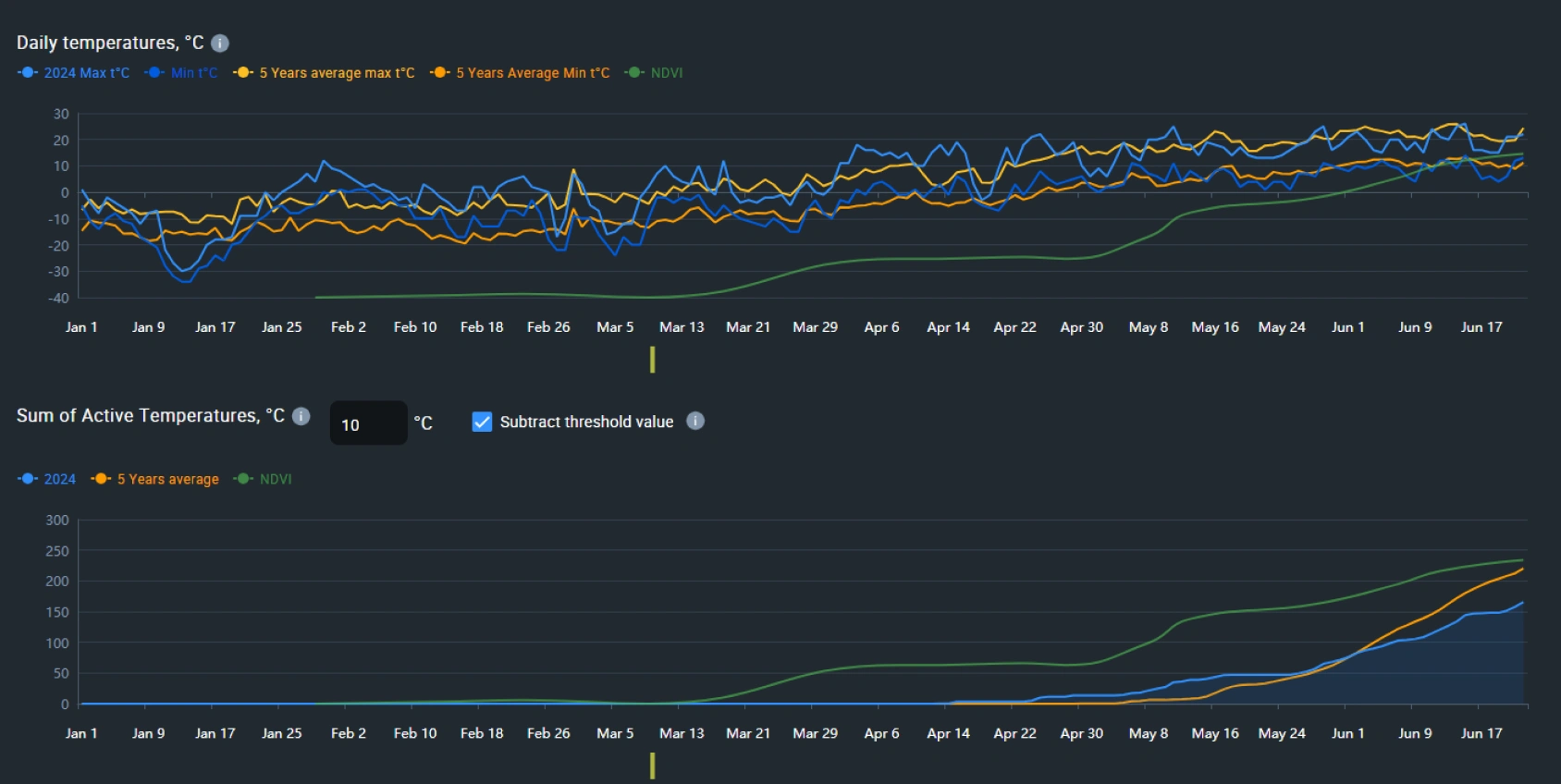

Requisitos De Suelo
El tipo de suelo ideal para el cultivo de brócoli debe ser un suelo rico y ligeramente ácido (pH de 6,0 a 7,0) . Antes de plantar, realice un análisis del suelo y añada cal si el pH del suelo no es adecuado para el brócoli. Para aumentar la fertilidad y mejorar la estructura del suelo, incorpore compost o estiércol envejecido.
Los suelos arenosos o arcillosos son adecuados para el cultivo del brócoli, siempre que drenen bien. Los lechos elevados regados mediante sistemas de riego por goteo pueden garantizar estas condiciones.
Requisitos De Agua
Unos niveles de humedad suficientes favorecen un crecimiento sano y una formación adecuada de las cabezas. Cuando las precipitaciones naturales son escasas, el agricultor debe ayudar con riego suplementario que satisfaga las necesidades de humedad.
Un suministro constante de agua, idealmente entre 250 y 380 mm, es óptimo para el cultivo de brócoli.
Manteniendo unas condiciones hídricas óptimas, ya sea mediante precipitaciones naturales o mediante riego, los agricultores pueden garantizar que sus cultivos desarrollen todo su potencial.
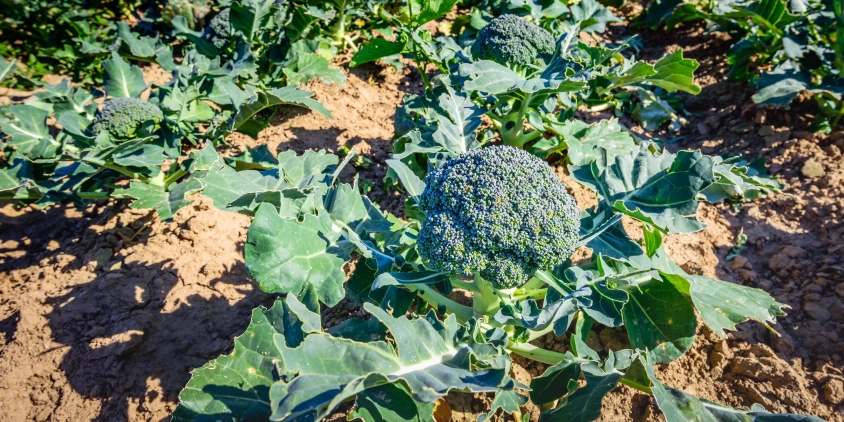
¿Cómo Sembrar Brócoli?
La fase de siembra del brócoli es fundamental para establecer un cultivo sano. En esta sección, repasaremos los pormenores de los distintos métodos de plantación del brócoli, como la siembra de semillas en interior o la siembra directa en el campo, y comentaremos diversas consideraciones sobre el momento oportuno para los cultivos de primavera y otoño.
¿Cómo Y Cuándo Se Siembra El Brócoli?
Un cultivo próspero empieza con el momento y la técnica de plantación adecuados. Los agricultores pueden elegir entre dos métodos de plantación, cada uno con sus propias ventajas dependiendo de las condiciones específicas de cultivo de brócoli y de los objetivos agrícolas:
- Trasplante de plántulas. Este método comienza en el interior, con semillas plantadas en una mezcla de alta calidad 6-8 semanas antes de la última helada prevista. Esta preiniciación es beneficiosa para los cultivos de primavera y puede optimizarse en entornos comerciales mediante el uso de invernaderos controlados. Una vez que las plántulas desarrollan dos conjuntos de hojas verdaderas, normalmente a las 4-6 semanas de edad, están listas para el trasplante. Trasplántelas al exterior 2-4 semanas antes de la última helada prevista, para darles tiempo a establecerse y aclimatarse antes de que lleguen las heladas.
- Siembra directa. Es una alternativa más sencilla, adecuada tanto para cultivos de primavera como de otoño. Para los cultivos de primavera, siembre las semillas 2-4 semanas antes de la última helada prevista, y para los de otoño, a mediados del verano. Tras la emergencia, aclare las plántulas para evitar el hacinamiento y garantizar un acceso óptimo a los nutrientes durante todo el periodo vegetativo. La siembra directa del brócoli puede ser especialmente eficaz para las operaciones comerciales cuando se combina con equipos de siembra de precisión, que garantizan una distribución y profundidad uniformes de las semillas.
Independientemente del método de siembra elegido, dé prioridad a la preparación adecuada del suelo y utilice semillas certificadas de alta calidad al sembrar brócoli.
Profundidad Y Distancia De Siembra Del Brócoli
Para garantizar un crecimiento robusto y uniforme, siembra las semillas a 1,3 cm por debajo de la superficie del suelo o, cuando trasplante las plántulas, hágalas coincidir con la profundidad de su recipiente previo para evitar el estrés. Procure que el brócoli tenga una distancia de siembra de 46-61 cm. entre las plantas de cultivo y 61-91 cm. entre filas . Esta estrategia de espaciado mejora la circulación del aire, minimiza el riesgo de enfermedades y fomenta el desarrollo saludable del cultivo. Los agricultores comerciales deben prestar especial atención al espaciado, ya que es clave para lograr un crecimiento uniforme y facilitar la gestión del cultivo y los procesos de recolección.
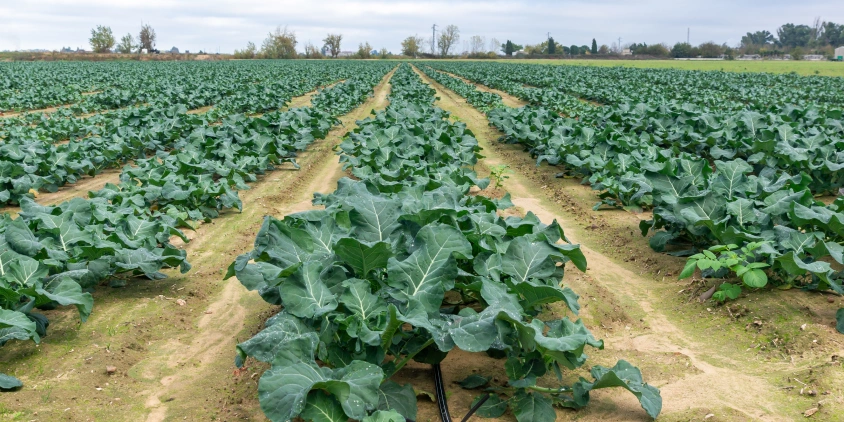
Cuidados Necesarios Del Cultivo De Brócoli
Un cultivo satisfactorio requiere ajustar la humedad del suelo, los niveles nutricionales y el control de plagas, entre otras cosas. Veamos qué necesita el brócoli en lo relativo a cuidados fundamentales para obtener una cosecha abundante.
Fertilización Precisa
El cultivo de brócoli prospera cuando se le proporcionan una fertilización abundante en nutrientes, por lo que realizarla de forma regular resulta muy beneficiosa. Impulse su crecimiento con un fertilizante NPK equilibrado antes de la plantación. A continuación, la fertilización del cultivo de brócoli debe ser rica en nitrógeno cada 3-4 semanas y al principio de la etapa de formación de las cabezas.
Lo ideal es determinar las tasas de aplicación basándose en informes recientes de análisis del suelo. Si no es posible realizar un análisis del suelo, aplique 134-112-112 kg/ha de fertilizante NPK cuando lo esparza por el campo, o 39-56-56 kg/ha para la siembra en hileras . Tenga cuidado de no aplicar fertilizantes para el cultivo de brócoli en exceso, ya que esto puede causar un crecimiento excesivo de las hojas a expensas de las cabezas.
Aproveche los mapas VRA (aplicación de tasa variable) de EOSDA Crop Monitoring para potenciar su estrategia de fertilización. Al usar estos mapas basados en datos satelitales en la maquinaria agrícola, puede optimizar la asignación de fertilizantes centrando sus esfuerzos en las zonas de vegetación media y alta, que prometen recompensarle con un mayor rendimiento.
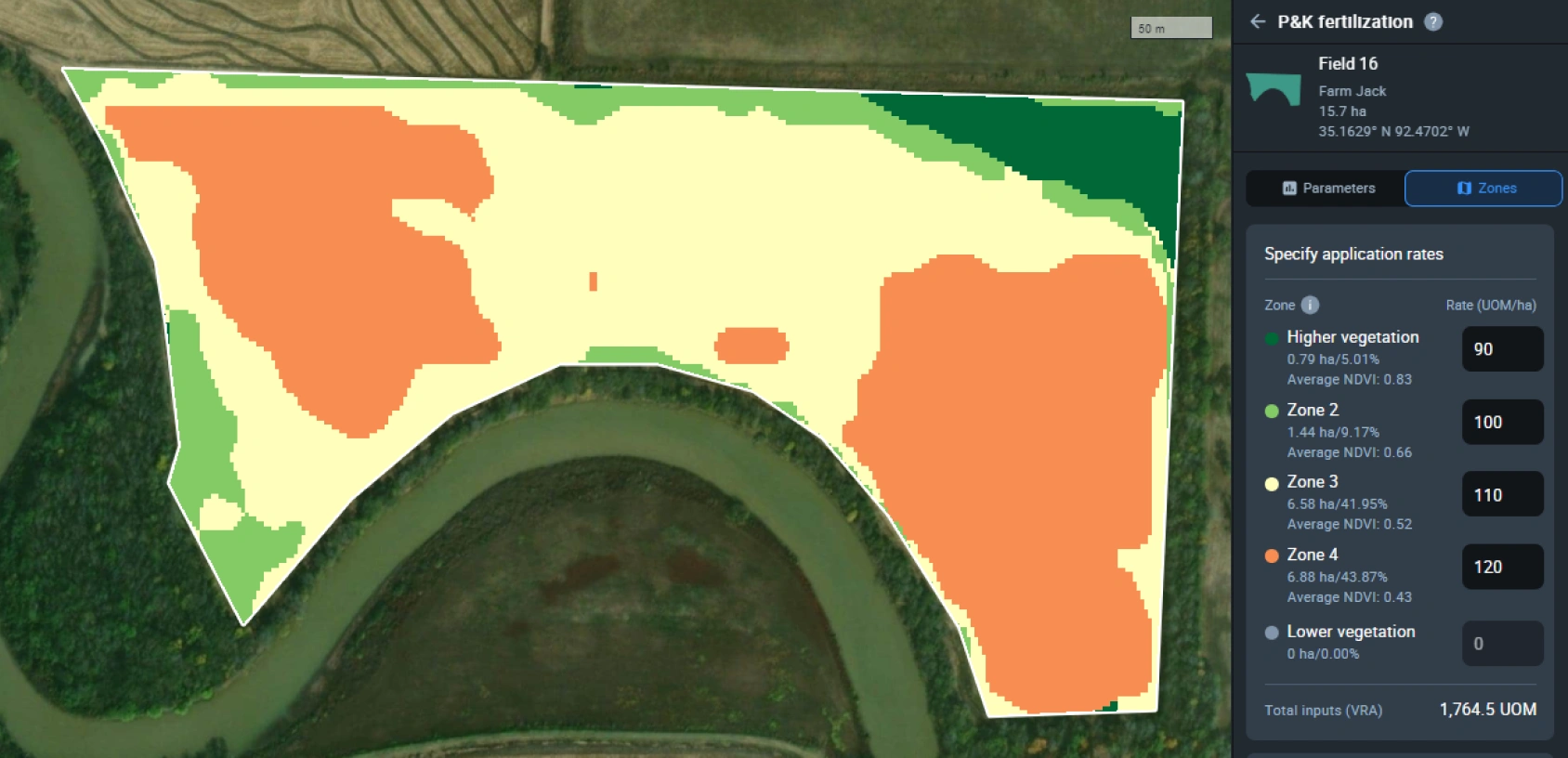
Control De Plagas Y Enfermedades
Las plagas del cultivo del brócoli son tanto de insectos, como alticinos y gusanos de la col, como de diversos patógenos fúngicos y bacterianos, como la podredumbre negra y el mildiu velloso. Las condiciones de crecimiento frescas y húmedas que prefiere el cultivo pueden crear el entorno ideal para que prosperen los hongos.
El éxito en la gestión de las plagas y enfermedades en el cultivo de brócoli depende de un enfoque polifacético, que combine medidas preventivas, monitoreo de cultivos periódico a lo largo de la temporada de crecimiento y tratamientos específicos cuando sea necesario. Para facilitar la identificación rápida de riesgos y su respuesta, se presenta a continuación un desglose de las plagas y enfermedades más importantes, junto con sus síntomas y las medidas de control recomendadas.
| Plaga/enfermedad | Síntomas | Métodos de control |
|---|---|---|
| Áfidos |
|
|
| Gusanos de la col |
|
|
| Alticinos |
|
|
| Mildiu velloso |
|
|
| Podredumbre negra |
|
|
| Hernia (clubroot) |
|
|
La aplicación de una sólida estrategia de rotación de cultivos es crucial en el cultivo de brócoli para mitigar sus plagas y enfermedades. Las plataformas de agricultura de precisión, como EOS Crop Monitoring, ofrecen potentes herramientas para apoyar este enfoque. La función Rotación de cultivos de nuestra plataforma permite a los agricultores realizar un seguimiento del historial de plantación y cosecha en múltiples campos, proporcionando información que puede servir de base para prácticas de agricultura sostenible y ayudar a romper los ciclos de plagas y enfermedades.

Riego Consistente
Las necesidades de riego del brócoli hacen que el cultivo crezca bien cuando está constantemente húmeda, de ahí que un riego adecuado sea una piedra angular del éxito. Asegúrese de regar bien las plantas en crecimiento, prestando especial atención durante las olas de calor o los periodos de sequía. Los sistemas de manguera y el riego por goteo en el brócoli deben centrarse en la zona radicular para conservar el agua y, al mismo tiempo, se reduce el riesgo de enfermedades fúngicas.
Para asegurarse de que el riego del brócoli es adecuado, actualice su estrategia de riego utilizando herramientas digitales como el Registro de actividad de nuestra plataforma, que permite a los productores a gran escala:
- planificar el calendario de riego;
- especificar las tasas de aplicación;
- designar trabajadores para cada tarea.
Esta función no sólo agiliza su rutina de riego, sino que también le ayuda a obtener información valiosa sobre la utilización del agua y los gastos para optimizar la asignación de insumos.
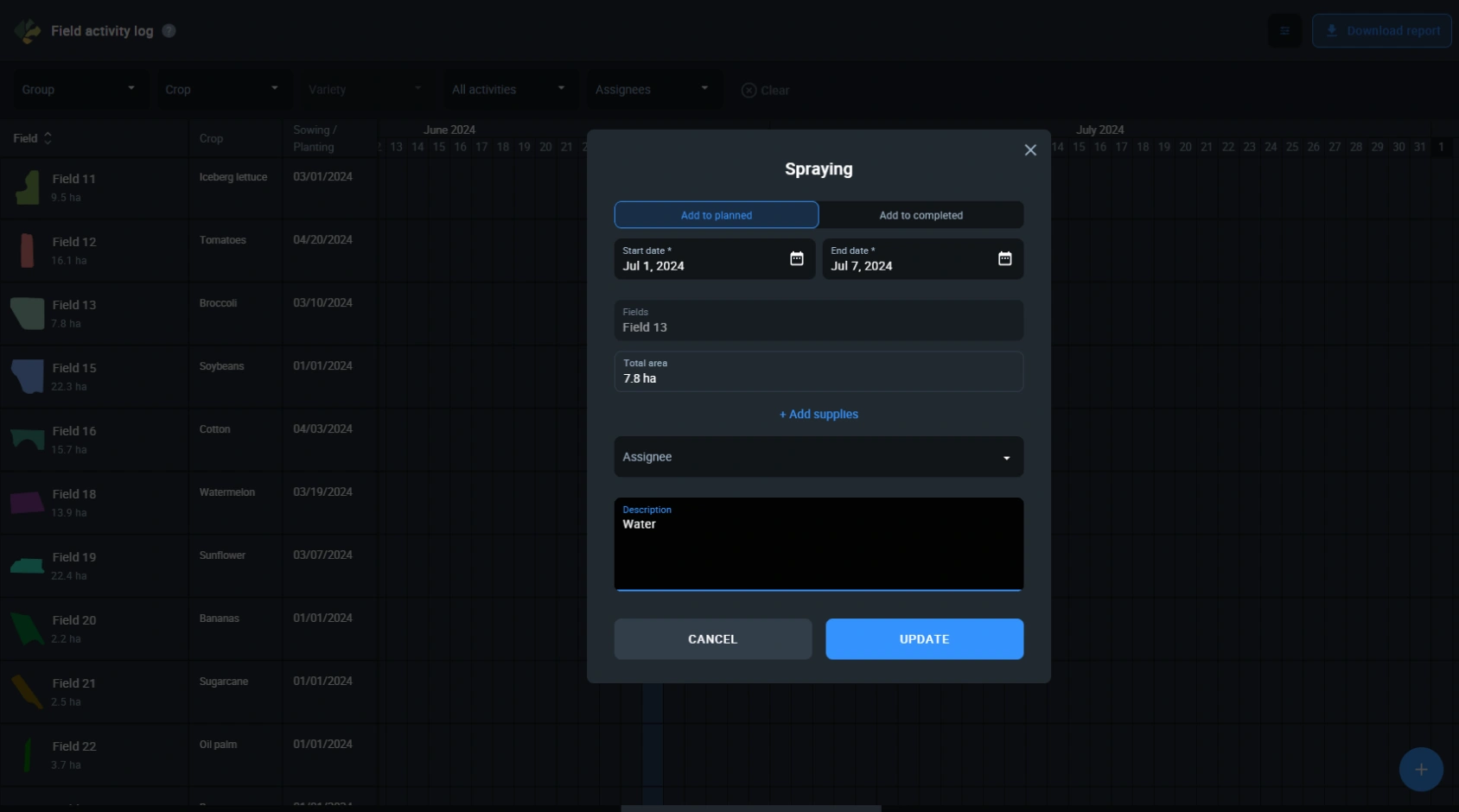
¿Cuánto Tarda En Crecer El Brócoli?
El tiempo necesario para que el brócoli crezca desde la semilla hasta la cosecha oscila normalmente entre 50 y 100 días, influido por la selección de la variedad y las condiciones de cultivo. Las variedades tempranas del cultivo de brócoli son las más rápidas, maduran en 50-65 días, mientras que las de estación media y tardía necesitan 65-100 días. Esta gama de periodos de crecimiento ofrece a los agricultores flexibilidad para adaptar su producción a las distintas condiciones de cultivo y a las limitaciones estacionales.
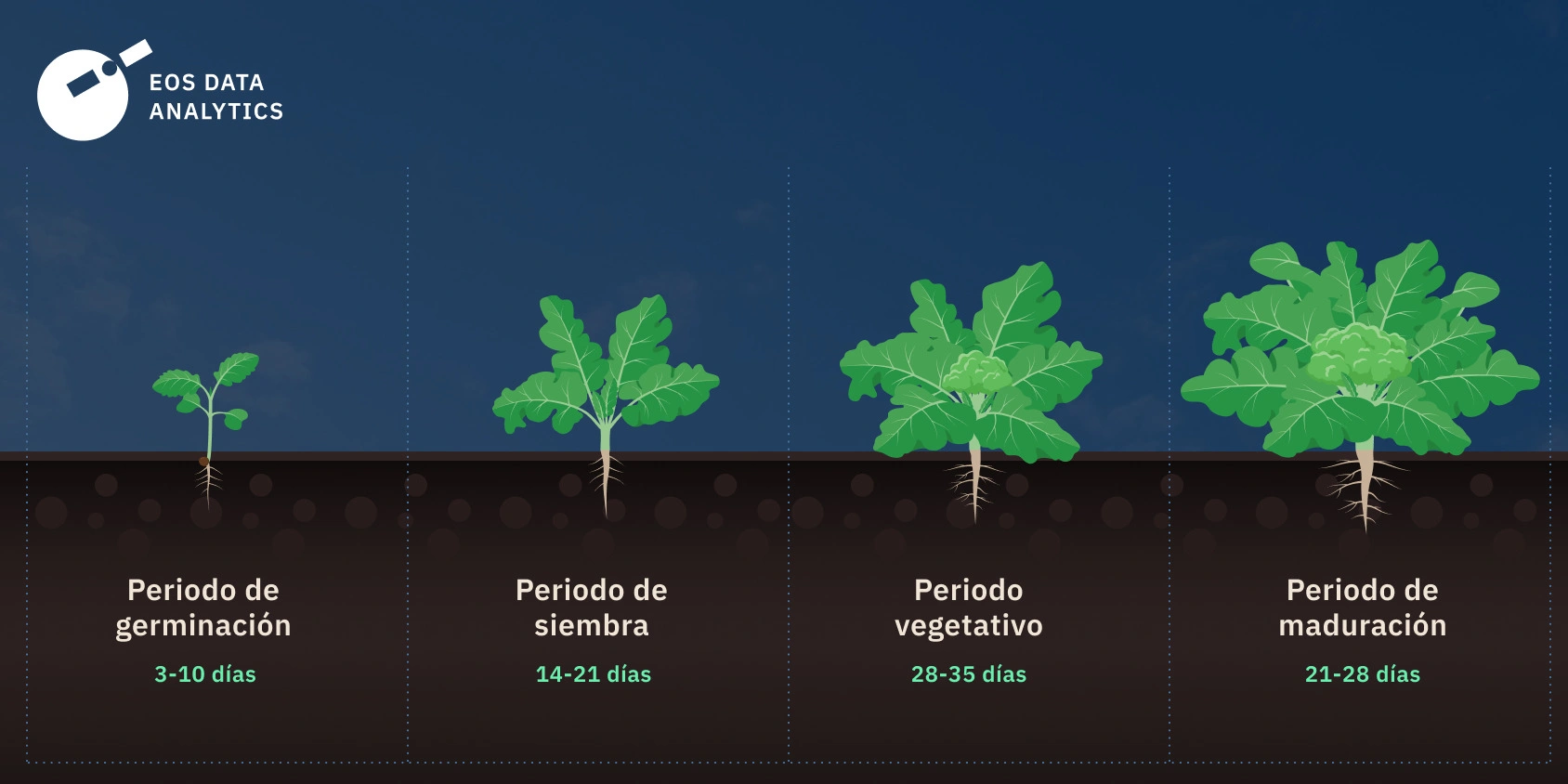
¿Cómo Se Cosecha El Brócoli?
Una satisfactoria cosecha del brócoli comienza con una planificación adecuada. Utilice la tecnología personalizada de estimación del rendimiento de EOSDA para fundamentar sus decisiones relacionadas con la cosecha de brócoli de cada campo. Coseche cuando las cabezas de las plantas sean firmes y tensas, antes de que los brotes comiencen a florecer. Utilice un cuchillo afilado para cortar la cabeza principal, conservando una parte del tallo y espere brotes laterales más pequeños para cosechas posteriores de muchas variedades.
Compruebe si hay gusanos ocultos y seleccione cogollos del tamaño adecuado, normalmente de 15 cm de diámetro, para garantizar la comercialización de esta hortaliza. Después de la cosecha del brócoli, mantenga la máxima frescura almacenando la cosecha en un ambiente húmedo y fresco a 0-2°C. Siguiendo estos pasos, los productores ayudarán a que su brócoli crezca en abundancia y destaque en el mercado.
Acerca del autor:
Vasyl Cherlinka tiene un doctorado en Biociencias con especialización en edafología y posee más de 30 años de experiencia en este campo. Asistió a la Facultad de Ingeniería en Ucrania y se licenció en Agroquímica, agronomía y edafología en la Universidad Nacional de Chernivtsi. Desde 2018, el Dr. Cherlinka asesora a EOSDA en sus problemas de edafología, agronomía y agroquímica.
Artículos recientes

Guía De Transición De Sentinel Hub EO Browser A EOSDA LandViewer
Las alternativas a EO Browser son muchas y variadas. EOSDA LandViewer le resultará familiar, pero con funciones extra: imágenes satelitales recientes, un gran archivo de datos y análisis avanzados.
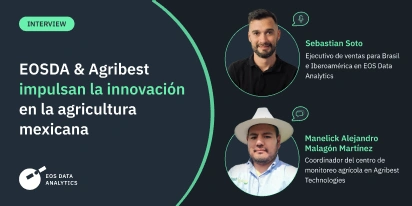
EOSDA Y Agribest: Impulsando La Agritech En México
En esta interesante entrevista, Agribest comparte cómo su colaboración con EOSDA está dando forma al futuro agrícola de México, centrándose en la rentabilidad, la sostenibilidad y la tecnología.
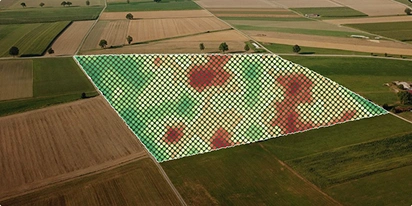
Mapa De Rendimiento Para La Agricultura De Precisión
¿Por qué dos campos anexos producen resultados tan diferentes? La cartografía y los mapas de rendimiento ayudan a explicar en qué zonas se desperdician los insumos y cómo gestionarlos adecuadamente.